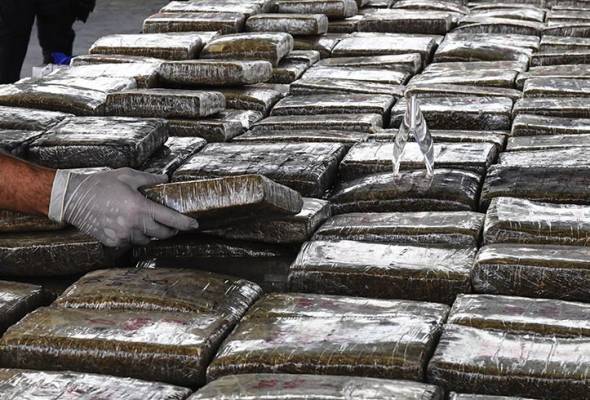
Published in AstroAwani, image by Astro Awami.
Our prisons are creaking at the seams.
As of October 2022, the prison population was at 76,336 people, exceeding maximum capacity by 36% as per international standards. When prisons are overcrowded to this extent, they become breeding grounds for communicable diseases, mental illness, substance abuse, violence (including sexual), self-harm, and suicide.
It’s both an on-going reality and material risk that affects inmates, their families, the prison staff as well as the wider community (“Prison overcrowding and the risks for public health: a global time-bomb?”, Fair Trials, June 17, 2019).
With the initial damages incurred by the crimes alongside the costs to house these inmates in prison, the total economic/financial costs become “two-fold” (already). Based on the average cost of housing for an inmate per day (see “15 seconds and costs RM1,975”, The Daily Express, 2018), Malaysia’s prisons are estimated to cost the government RM3,015,272 per day.
Certainly, incarcerating more individuals should be the exact opposite of a solution. Yet, the prison population of Malaysia has only been rising.
One dilemma – which could be framed as such – is whether the country has really become more “crime-ridden” or are these cases symptomatic of a more deeper systemic and structural challenge?
We often think of the inmates as merely undifferentiated criminals.
We are so prone to forget that many have families and mouths to feed which meant that often times, the offenders act out of sheer desperation and (social, socio-economic, financial) insecurity (imagined or real).
However, it’s important to distinguish between different crimes – for example, between a violent crime of robbery in contrast to a “petty” crime of theft that’s due to hunger and hopelessness.
According to the Department of Statistics Malaysia (DOSM), less than 6% of crimes committed in 2021 were violent i.e., robbery, causing injury, murder, and rape. In 2021 there were 11,495 cases of violent crimes. The rest were 108,220 drug cases, 41,479 property crimes (i.e., theft cases), and 31,490 commercial crimes (i.e., fraud and cybercrime cases).
Thus, we must lift our one-dimensional veil and realise that a lot of the inmates are, in fact, not career or professional criminals.
For example, an unemployed and homeless father/mother stealing a tin of milo for his/her children. Instead of condemning the father/mother into prison and leaving his/her children behind, society should work towards rehabilitating and empowering the father/mother who committed the crime to break out from the confines of poverty and deprivation and placed on the trajectory – or at least an eco-system – of social mobility and economic opportunities.
In a survey of Malaysian youths aged 15-40 years old, the prevalence of drug substance abuse (DSU) was 5.5% (“Prevalence of Drug and Substance Use among Malaysian Youth: A Nationwide Survey”, Ismail M., International Journal of Environmental Research and Public Health, Vol. 19, Issue 8, 2022). This amounts to 612,112 individuals.
According to the ASEAN Drug Monitoring Report 2016, the largest socio-economic group of drug users is the B40.
Drug abuse disproportionately affects the poor.
By extension, research has demonstrated the correlation and linkage between hardcore drug abuse and economic gains-related crimes (see e.g., “Illicit drugs: The alternative truth”, Journal of Public Security and Safety, vol. 7, no. 1, 2017). The reality is that the crimes are committed out of desperation to fund the destructive but addictive habits.
In view of these statistics, should punishment be the only appropriate, productive and effective response towards crime?
“Social support theory” by Don Drennon-Gala and Francis Cullen argues otherwise.
The theory proposes that supportive societies and relationships can lessen individual delinquency and crime rates, and that social support must be at the core of effective social control and rehabilitation efforts (“Social Support Theory”, Kort-Butler L., The Encyclopedia of Juvenile Delinquency and Justice, 2017).
In other words, a social support system can be crucial in preventing the perpetuation of dysfunctional behaviours resulting in criminal acts.
When a friend or family member falls sick and catches a cold, the natural response would be to extend care and support for their condition – rooting for or directly nurturing them to return to optimal health.
We’ve seen the birth of the heart-warming people-centric movement of #kitajagakita – ordinary folks rising up to help frontliners and the needy during undoubtedly one of the most difficult times ever. Amidst an unprecedented crisis, radical acts of altruism by the community fills up the crevices left by the system.
Why then don’t we adopt the same attitudes towards those in-need of social and financial support in prisons – and going further by institutionalising and systematising the practice?
Indeed, weak social attachment and sense of alienation is what mainly motivates the foray into drug abuse and criminal activities either solo or through gang membership, for instance (“Fighting drugs on the home front”, New Straits Times, June 6, 2019).
Instead, we see censuring, shaming/stigmatising/shunning and retaliating as embodied by the idea and practice of punishment (“just deserts”) as the default response – further reinforcing the weak social attachment and sense of alienation of the accused.
There needs to be a societal as well as legal re-conceptualisation of who is a “criminal”. It’s grossly unreasonable for there to be indiscriminate social and legal treatment to all accused without regard for the context-specific individual socioeconomic backgrounds.
Now, under the Prevention of Crime Act 1959 (POCA), individuals can be arrested, detained and/or restricted without the right to challenge the reasons of their incarceration and/or restriction in court. The fundamental right to a fair trial is denied (“Abolish POCA and detention without trial laws”, MalaysiaKini, November 16, 2017).
Originally, POCA was intended to apply to gangs and group crimes involving at least 5 people. However, after an amendment in 2014, POCA is now applicable to crimes including even that committed by only two persons.
Additionally, the Act now applies regardless of whether you’re a drug mule or drug lord, gang lackey or gang leader (mastermind), etc.
Another provision under the Security Offences Act 2012 (SOSMA) also allows for the statutory denial of bail even for lesser offences (“About 30,000, not yet tried and convicted, are in Malaysia’s overcrowded prisons of about 76,336 inmates”, The Online Citizen, February 8, 2023).
Under POCA, with just a statement from a police officer of the rank of inspector, a suspect can be remanded for up to 2 years at a time, with an unlimited renewal of this detention order.
Even under the Criminal Procedure Code (CPC), when the maximum 14-day remand period is up, the accused can be moved to another district with a fresh remand application (“Law Reform Report Rights of Remand Prisoners”, Suruhanjaya Hak Asasi Manusia Malaysia, 2001). Hence, pre-trial and remand prisoners end up stuck for an indefinite period.
As such, it should be no surprise that 40% of the prison population, or 30,534 individuals are merely individuals in remand, pending their case in court (““Zahid out on RM2 mil bail but many prison inmates can’t afford to raise bail even for a paltry sum”, FocusMalaysia, February 9, 2023).
It may well be the case that many of the prison population is composed of innocents too poor to afford bail or are foreigners unable to obtain a lawyer. Even more harrowing is the idea that innocents may resort to pleading guilty because their prison sentence may be shorter than if they had waited in remand indefinitely, with no hope in sight as to when the trial might begin or end.
What’s needed are prison reforms – to implement a compulsory rehabilitation programme for all inmates to have a prospective post-prison life that’s fulfilling and productive.
For now, the prison department is cooperating with the courts to speed up trials and focus on rehabilitation programmes in the community which currently involve a total of 82,487 prisoners with a recidivism rate of only 0.24 per cent.
To be sure, offenders should still be held accountable for their costs to society caused by their crime.
As such, with property and commercial crimes, a ringgit-value to the damages could be assessed.
The purpose of the offender then remaining in prison is to become liable up until the damage cost is paid off (to the victim, beneficiary or the State as the case may be). During this time in detention/imprisonment, the inmate will work towards paying off the criminal damage incurred. This is when the rehabilitative dimension comes into salient form.
As such, the prison must act as a transitional institution to not merely detain, but to provide job opportunities for these inmates to upskill, work and compensate for their damages.
For the programme to be truly rehabilitative, it must also incorporate aspects of mental health, community support, and upskilling.
The final part of the system includes job matching and educational or training opportunities for ex-inmates (i.e., post-prison life – however “brief”). To achieve this, strong public-private partnerships must be encouraged as part of corporate social responsibility (CSR) or via dedicated NGOs.
This exit-route could also be applied to pre-trial and remand prisoners accused of property and commercial crimes. Instead of senselessly waiting in remand, they would be given the opportunity to “earn their way out” and be provided with upskilling and job opportunities.
Policy must also be put in place to prevent the labour exploitation of these detainees/inmates.
Drug-mules, drug-addicts, and convicts from socially disadvantaged backgrounds should be provided with systemic social support instead of facing a potential death sentence.
At the end of the day, just because some of us lose our way a little (oftentimes due to the lack of a support system), that doesn’t mean we are (totally) incapable of a fulfilling a meaningful and productive life.
However, this isn’t the case where systemic and structural inefficiencies have failed the poor, underprivileged, and marginalised.
This is evident as we see recidivism rates being as high as 15% for inmates without rehabilitation opportunities (“Malaysia aims to cut prison occupancy rate by two-thirds in 8 years”, Malaysia Now, October 26, 2022). When ex-inmates “survive” the harrowing experience of imprisonment, only to come home to ostracisation and being unequipped for the job market or facing barriers due to stigma, that’s when we have wasted away the opportunity to re-form the ex-inmate whilst using taxpayer’s money inefficiently.
Regarding the latter, shouldn’t our taxes be better deployed by ensuring that recidivism is reduced, rehabilitation results in re-integration and productive contribution to the economy?
A more humane approach should drive our prison reforms – should we wish to get to the root of the overcrowding issue. It’s about time we craft long-term solutions to systemic issues.
Jason Loh and Jennifer Ley Ho Ying are part of the research team at EMIR Research, an independent think tank focused on strategic policy recommendations based on rigorous research.

